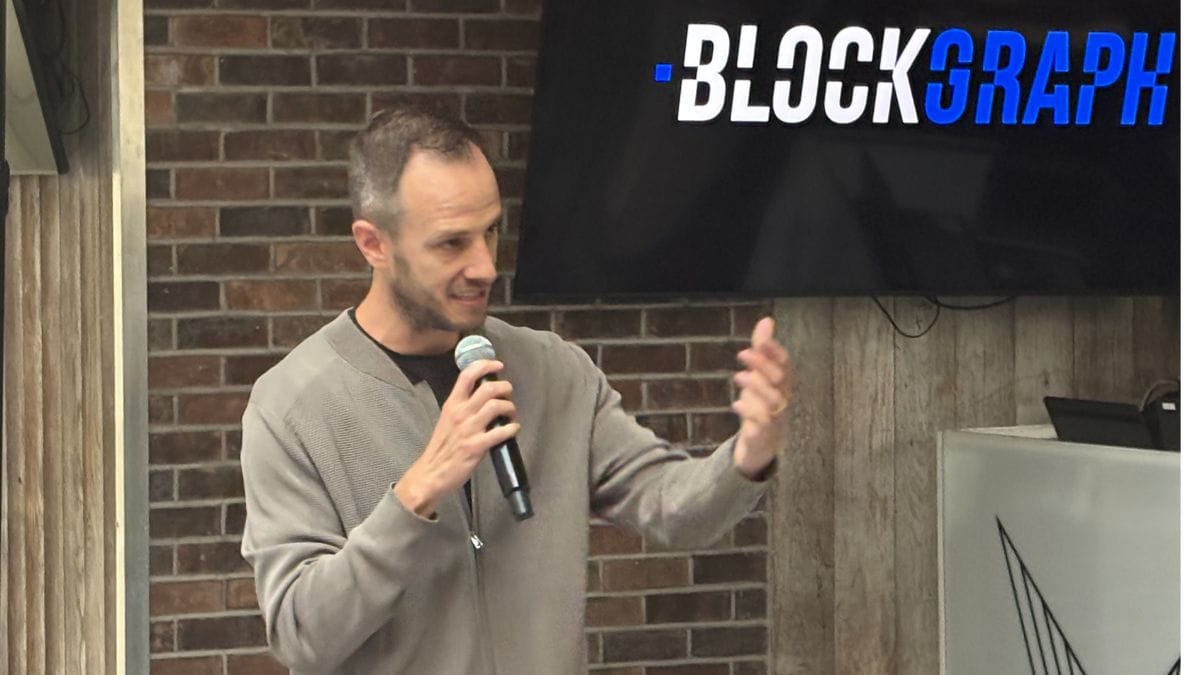Blockgraph’s Instant Audiences Offers Relief from Ad Tech Complexity
‘What we’re launching today is not a new product. It’s not a new feature. It’s a fundamentally different way of operating,’ says Blockgraph’s Jason Manningham

Ad tech makes doing some things too difficult, according to Jason Manningham, CEO of Blockgraph.
At Blockgraph’s Converge event during Advertising Week in New York, Manningham asserted that most marketers already know who they want to reach.
Unfortunately, the current process “takes too long, costs too much and leaks value at every single step of the process,” he said.
The result, said Manningham, is that even if you define your audience clearly and carefully “what gets delivered back is layered through ID mesh tables, opaque systems and various activation paths that water down your clearly defined audience into some version of that.”
He asked “what if the system actually listened?”
The solution, Manningham said, is Blockgraph's Instant Audiences. “What we’re launching today is not a new product. It’s not a new feature. It’s a fundamentally different way of operating. It’s a better way.”
All an advertiser needs to do in order to reach local households is tell Instant Audiences who they want to reach and the system does the rest. It’s as simple as “Say it and reach it,” Manningham said.
Initiating a search for an audience can be as simple as typing in a business’ website URL. The agentic AI system figures out the rest: where stores are located, which households are near those locations and which neighborhoods are most likely to convert almost instantly. It also spits out marketing intelligence about those consumers that the marketer can use to sharpen their messaging based on information including Census data.
For example, you could ask for eco-conscious neighborhoods in Detroit with young families if you’re launching a new electric vehicle.
If the advertiser wants to make changes in the audience, by adding say income qualifiers or seeking households around under performing stores, they just tell the system that in natural, human language, and a new audience is returned.
Those audiences can be activated with any premium video platform that can read the Blockgraph IDs. That includes FreeWheel, Comcast’s ad tech platform, which works with most linear networks and many streamers, plus Comcast Advertising and Charter Communication’s Spectrum Reach. (Blockgraph is owned by Charter, Comcast NBCUniversal and Paramount.)
Having a system as simple as Instant Audiences should help TV compete with digital for local advertising.
“We are committed to providing our local advertisers new ways to create audiences that enable localized reach and simplify activation to reach their potential customer,” said Dawn Williamson, chief revenue officer, media solutions at Comcast Advertising. “Instant Audiences represents a major step forward by bringing the power and ease of AI and the certainty of deterministic identity to localized targeting—all while protecting consumer privacy.”
“We are focused on making it easier and more effective for local businesses to advertise on TV and streaming platforms,” said Dan Callahan, senior VP and chief revenue officer at Spectrum Reach. “With tools like Instant Audiences, these advertisers can make data-backed decisions, fast, with the same quality tools and data usually reserved for larger advertisers.”
Manningham added that Blockgraph didn’t build the Instant Audiences for itself and its clients.
“We built it for everyone in the industry. It’s open, it’s modular, it’s API ready. If you build campaigns, we want to work with you. If you activate campaigns, we want to work with you,” he said.

